Shell’s Uninhabited Island Has A Story
New Year’s Eve 2012, a Shell Oil drilling rig crashed off the shore of an uninhabited island near Kodiak. The landing site lit up on the media radar. The actual setting of the wreck was overshadowed by the fears, aspirations and politics surrounding the drilling rig.
To peer into the background of these images, past the drilling rig and the news updates, “uninhabited” does not do the island justice — Sitkalidak Island has played its part in history. The island retired from public eye nearly 50 years ago, but has weathered every major boom and bust in Alaska for more than 200 years. A massacre on its shores sounded the beginning of Russian America. Forgotten Siberian cattle waved in an age of agriculture for American Alaska. The 1964 earthquake crippled that blossoming industry, and Sitkalidak fell silent until last week.
A century ago, Sitkalidak was a promising new venture for Americans, but misfortune dogged the island constantly. Today, Sitkalidak is once again a stage where entrepreneurial stubbornness battles wild Southern Alaska’s tenacity.
The Kulluk off the coast of Sitkalidak, photo by Petty Officer 1st Class Sara Francis, via U.S. Coast Guard
Shell’s drill rig Kulluk left Seattle this summer to explore the Arctic. The season was rife with setbacks. After some preliminary work at a prospective well, the Kulluk departed the Arctic Ocean for Seattle, according to the Alaska Dispatch.
The tugboat Aiviq — Inupiaq for “walrus” — was taking the Kulluk to Seattle when the tug’s engines failed. Even with the aid of another tugboat, the tow lines kept losing their grip, and crews eventually let the rig bob away into the storm. Kulluk found its way to Sitkalidak Island on New Year’s Eve. The storm died down and crews rushed to its side. The Coast Guard and the world are monitoring its hull for any signs of tear, for it carries nearly 150,000 gallons of fuel.
This is not the first graveyard on Sitkalidak. But let’s not glance so far back just yet — we’ll pause briefly in the 20th century. I retell much of this tale using John Sherman Long’s “McCord of Alaska: Statesman for the Last Frontier.”
Jack McCord had reindeer on his mind when he bumped into a fisherman in Anchorage. It was 1924, and McCord had just returned from a meeting with President Calvin Coolidge in Washington. He convinced the president to support reindeer herding along the railroad backbone of Alaska. He also suggested using the Aleutians for fur farming. Luckily for both the fisherman and McCord, the statesman wasn’t blind to other opportunities.
The fisherman said he just returned from voyaging around Kodiak Island, to the south. Twice he’d stopped at nearby islands for water, and saw — of all things — cattle.
McCord jumped on the fisherman’s boat and they set sail for Sitkalidak and Chirikof islands.
Bluetop covered the pastures of mountainous, 120-square-mile Sitkalidak. The land also offered redtop, beach rye and saltwater sedge for forage. The area boasted longer growing seasons and milder winters than other parts of the Last Frontier.
That didn’t explain how the livestock got there.
Livestock on Kodiak Island in 1972, via U.S. Fish and Wildlife Service National Digital Library
In the 1700s, Russian fur traders stormed through the Aleutians toward Southern Alaska, intent on laying claim to the frontier. They fought those who resisted, even though law forbade them to kill Alaska Natives except in cases of self defense. Sometimes, the Alaskans won and destroyed a Russian trading ship. But they were losing ground, and Russian Alaska was on the horizon.
In 1784, Russian trader Grigori Shelikhov sent 130 men and cannons to Refuge Rock, a tiny sanctuary hugging Sitkalidak’s shore. About 2,000 of Kodiak’s Alutiiq villagers retreated to that traditional refuge, but Shelikhov’s men found a secret route onto the islet. Negotiations failed.
The two sides fought, and hundreds of villagers died — many throwing themselves off the island’s cliffs. By the next summer, according to one Alutiiq account, the stench of death overwhelmed the air around the rock.
Fox trapper’s bounty on Umnak Island, unknown date, via U.S. Fish and Wildlife Service’s National Digital Library.
The atmosphere changed in Alaska. Russians wanted to ranch, to build more than trappers’ cabins.
Shelikov built Russia’s second settlement in Alaska by the Sitkalidak Strait, at Three Saint’s Bay on Kodiak Island. They brought cattle from Siberia, but their cattle turned hardy and produced little meat and milk. The settlers started importing their meals.
Eventually, the fur trade tapered off when sea otters of the area were wiped out.
Ranching and settlement never really took off. Less than a thousand Russians were in Alaska at any given time.
The United States bought Alaska, and with it Sitkalidak, in 1867.
As McCord discovered, the Siberian cattle survived. Surveyors at the time discovered the grasses made cattle “fat as seals” and livestock learned to hide in ravines to protect themselves from the elements. A few of Russia’s sheep also survived.
A brown bear on Kodiak Island, via U.S. Fish and Wildlife Service’s National Digital Library
Before McCord settled on Sitkalidak, the Department of Agriculture bred both sheep and Scottish Galloway cattle at an experimental station on Kodiak.
Lush Kodiak was no Garden of Eden, though — not while the bears were there. Further south, ranchers worried only about coyotes. On Kodiak, ”a single bear has been known to kill or maim a dozen cattle in one night.”
A volcanic eruption in 1912 destroyed much of the Department of Agriculture’s work. The government abandoned the station, and soon McCord came to revive Sitkalidak. He bought the islands’ cattle and organized two bills for Congress — the first allowed fur farming in the Aleutian islands, the second opened some public lands in the area to livestock. By 1927, both bills passed. Coolidge sent him to Chirikof and Sitkalidak, and asked him to survey the Aleutian Chain to Attu for opportunities to expand.
McCord set to work. His glamorous vision for Southern Alaska agriculture drove away any shadows past and present, so that Americans saw only promise and opportunity.
His efforts paid off. In 1953, The Toledo Blade boasted ”If you want to raise cattle without being fenced in, come to Alaska.”
Americans found the Alaska meat “very tender and delicate.” The U.S.D.A.’s Agricultural Research Service (then the Agricultural Research Administration) suggested supplementing or replacing the native grasses with clover and bromegrass. The cattle survived well enough on their own, so the native vegetation stayed.
[googlemaps https://maps.google.com/maps?f=d&source=s_d&saddr=Sitkalidak%20Island&daddr=chirikof&hl=en&geocode=&aq=0&oq=sitkalidak&sll=56.556455,-154.407349&sspn=2.170702,7.278442&t=h&mra=ls&ie=UTF8&ll=56.498892,-154.401855&spn=4.245999,9.338379&z=6&output=embed&w=425&h=350]
McCord’s exuberance in Washington won him sheep from Wyoming, and he bred new cattle with the surviving Galloways to create a breed that fended well in the harsh climate. He sold his mutton and beef in Alaska, and found a world market for his fox pelts. Better yet, Sitkalidak did not have Kodiak brown bears at the time.
In the ’30s, he ventured onward to Chirikof Island, once the site of a Russian prison. He discovered gold and platinum. Remote Chirikof provided more stories of woe than success, though. Storms marooned McCord’s wife and dog on the island, leaving them at the whim of wild and aggressive cattle for two weeks. The shadow of the Great Depression soured the whole operation.
McCord left to explore opportunities in Mainland Alaska. He returned to Southern Alaska at a time when Palmer and Anchorage were booming and Matanuska agricultural operations fluorished. Feisty Chirikof remained a problem child, stranding McCord and his crew for weeks, until they were near death.
Sitkalidak, on the other hand, had done well in his absense. As World War II began overseas, the Navy looked for a way to feed soldiers on Kodiak, and Sitkalidak outshone its unruly sibling as a candidate. McCord planned to relocate the Chirikof cattle, but his men failed to coerce the herd onto a ship, and he abandoned the prison island to focus on Sitkalidak.
He eventually returned and successfully ran a slaughterhouse out of Chirikof, but by 1949 he had little time to spend on the project.
McCord returned to warmer climates to give voice to Alaskan interests. He analyzed the state’s potential for everything from developing the resources of the Brooks Range to eliminating brown bear protections on Kodiak. He left Sitkalidak to Ira “Rocky” Rockwell.
[youtube http://www.youtube.com/watch?v=-tcX4oCwqPk?version=3&rel=1&fs=1&showsearch=0&showinfo=1&iv_load_policy=1&wmode=transparent]
Rockwell’s foreman slept through the island’s next big disaster. The 1964 earthquake produced tidal waves that “swept away the livestock, buildings, and equipment,” according to “McCord of Alaska.” Rockwell, on Kodiak at the time, had a heart attack when he surveyed the damage.
Deserted, Sitkalidak became uninhabited, save for the brown bears that finally made their way across the narrow strait.
Nearly 50 years later, a towboat line snapped, and a metal top raced across the ocean until it grounded, one beach over from where Russians massacred the Alutiiq more than two centuries earlier.
And so, the island became that brown, rocky backdrop to a national story — uninhabited, save for its ghosts.
[youtube http://www.youtube.com/watch?v=YMOaQYTar3w?version=3&rel=1&fs=1&showsearch=0&showinfo=1&iv_load_policy=1&wmode=transparent]
_________________________________________________
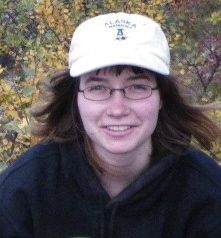 Kelsey Gobroski is a KTOO public radio intern with a science background. She works for the legislative show Gavel to Gavel in Juneau. She graduated in May 2012 with a degree natural resources management at the University of Alaska Fairbanks, as well as minors in Russian and journalism. She copy-edited and covered science for the university’s student newspaper, the Sun Star. She writes the blog Boreal Bites.
Kelsey Gobroski is a KTOO public radio intern with a science background. She works for the legislative show Gavel to Gavel in Juneau. She graduated in May 2012 with a degree natural resources management at the University of Alaska Fairbanks, as well as minors in Russian and journalism. She copy-edited and covered science for the university’s student newspaper, the Sun Star. She writes the blog Boreal Bites.
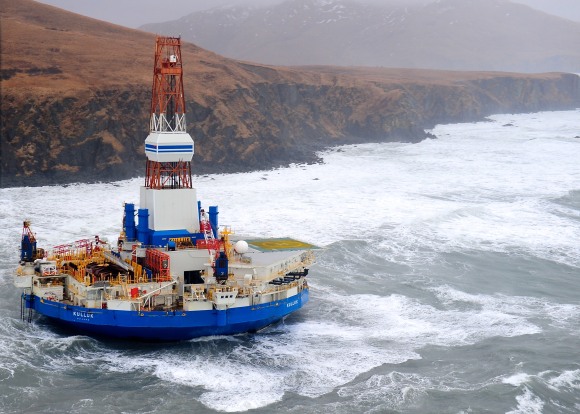
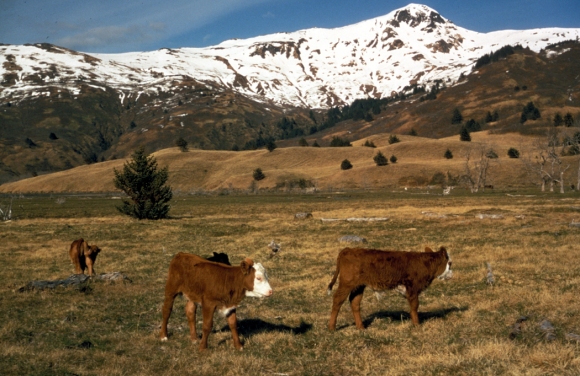
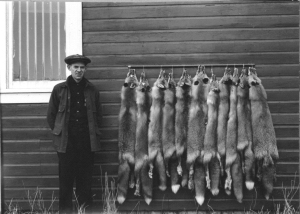
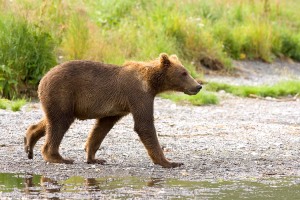
Thank you Ms Gobroski!
I knew about the massacre at Awa’uq ( Refuge Rock ) but none of the rest of it.
Thank you AKM for posting this here.
Guess my previous comment vanished into the ozone, or I posted it to the wrong thread…. but at any rate, this was a fascinating read, thanks!
I think Shells go to line is “on an uninhibited island.” As that’s what they called Unalaska/Dutch Harbor when they Nobel Discoverer “didn’t” run aground in July. If they say it, does it not make it true? And *poof* we all just disappear and cease to exist.